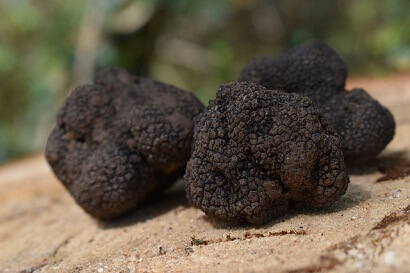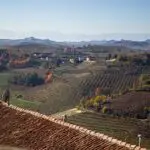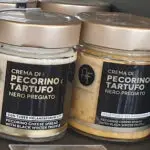If you’ve ever wondered how many different types of truffles exist and how they differ from one another, you’re not alone. Based on the time of year they’re harvested, truffles can be divided into two main categories, winter truffles, and summer truffles.

Turns out there is only one major difference between winter and summer truffles: the harvest period. Summer truffles can be collected during the summer months whereas winter truffles are harvested during the colder ones.
If you’re interested in learning about winter and summer truffles and other varieties of truffles that exist, continue reading to find out more. Happy reading!
Types of Truffles Explained
If you’re confused about the different kinds of truffles available, we’re here to help. Below, we’ll list down the different types and explain them in detail.
1. Winter white truffle
White winter truffles, also known as the Piedmont truffle, are harvested primarily in the Piedmont region of Italy, as well as other European countries including Croatia. The truffle has a musky aroma, sharp flavor, and a smooth white-yellow exterior.
2. Winter black truffle
Black winter truffles also called Périgord truffles, or Tuber Melanosporum, are winter truffles that grow beneath oak, poplar, and hazelnut trees. They have a dark brown color and an earthy flavor with subtle hints of cocoa.
3. Summer white truffle
Also known as Tuber Borchii, the summer white truffle is harvested in the same regions as the winter white truffle, including Piedmont and Tuscany. It has a musky aroma and sweet flavor.
4. Summer black truffle
The summer black truffle is quite similar in appearance to the winter black truffle. Also known as Tuber Aestivum, it doesn’t have a particularly strong aroma but is widely used in cooking due to its earthy, chocolaty flavor.
5. Terfez truffle
The Terfez truffle is harvested in the desert regions of the Middle East and North Africa from December to April. It has an intense aroma and light color and is the least rare type of truffle.
6. Chinese black truffle
The Chinese black truffle, also known as the Himalaya Truffle and Tuber Indicum, is a type of Asian truffle that grows beneath conifer trees in Nepal, Bhutan, Tibet, and some provinces of China. It is quite similar in appearance to the winter black truffle and has a textured exterior.
Difference between Summer and Winter Truffles
There’s only one major difference between summer and winter truffles — the time of the year when they’re harvested. Summer truffles, as the name implies, are harvested during the summer months, from April to August. Winter truffles, on the other hand, are typically harvested from October to April.
Difference between Black Truffle and Summer Truffle
There are a few major differences between black truffles and summer truffles. Here is a list of them:
- The black truffle is harvested from November to March while the summer truffle is harvested from May to August.
- The summer truffle has a coarser peridium than the black truffle.
- The truffle flavor for each type is different. Black truffles typically have a stronger flavor than summer truffles.
Black Truffle vs White Truffle: Taste and Scent
Black truffles and white truffles have quite a few differences when it comes to taste and scent. The black truffle has a sweet, rich flavor that reminds one of chocolate as well as a delicate scent. These characteristics make the black truffle a common and versatile ingredient in a plethora of dishes.
White truffles, on the other hand, have a more delicate flavor with hints of garlic and pepper. The aroma of a white truffle is also usually more subtle.
Due to these differences in their flavor and fragrance profiles, black and white truffles are used differently in cooking, which we’ll explore in more detail in the next section.
Using Different Types of Truffles in the Kitchen
Due to the rich and sublime flavor, they bring about, truffles are used in a wide variety of dishes, including pasta, risotto, and foie gras. But not all types of truffles are used in the same manner.
Black truffles are mostly included as part of toppings or garnish on dishes instead of as key ingredients. They are served in thin slices or as shavings on a large variety of meat and pasta dishes to enhance their flavor.
White truffles, on the other hand, are usually served alongside lighter dishes such as risotto, due to their more delicate flavor profile.
Final Thoughts
In a nutshell, the only difference between winter and summer truffles is the time of year they’re harvested, as their names imply.
In this guide, we covered everything you need to know about winter and summer truffles and explored the 6 major types of truffles in great detail. We also answered other common questions you might have on the subject.
Thank you for reading this guide and we hope you found it informative and enjoyable! We hope you try out exciting culinary ideas with your newly-acquired truffle knowledge!
FAQs
Why are winter truffles more expensive than summer truffles?
Black winter truffles are more expensive than other types of truffles since they are quite rare and are only harvested for a limited time during the winter months.
What do black summer truffles taste like?
Black summer truffles have a different flavor compared to white summer truffles. Their flavor profile is mild and delicate. The taste of black summer truffles contains hints of chocolate, garlic, and hazelnut.
What is the rarest type of truffle?
White truffles are usually considered the rarest type of truffles that grow in Piedmont, Italy. Since they are quite rare, they are also incredibly expensive.
Which truffles are not edible?
While there are many edible species of truffles available, there are some that are not. Although there are no known poisonous types of truffles in existence, many species are simply not palatable for humans.
How can you preserve summer truffles?
If you want to preserve summer truffles, wrap them up in cling film. This way, the truffles won’t lose their aroma and can be easily preserved for a month or more.
- The Top Restaurants Specializing in Truffle Dishes - August 10, 2023
- Truffle Panna Cotta: A Decadent Dessert Recipe for Truffle Lovers - August 7, 2023
- Truffle Scrambled Eggs: A Luxurious Breakfast Delight - August 7, 2023








